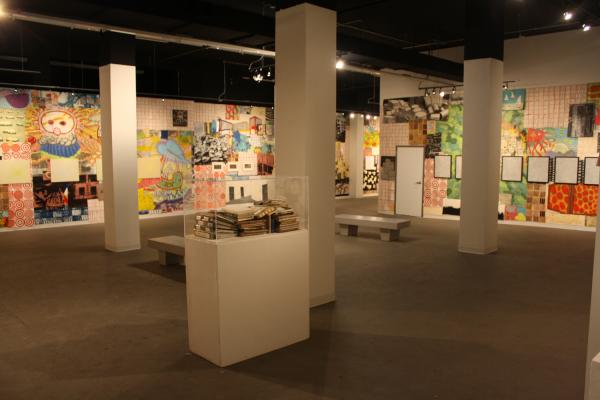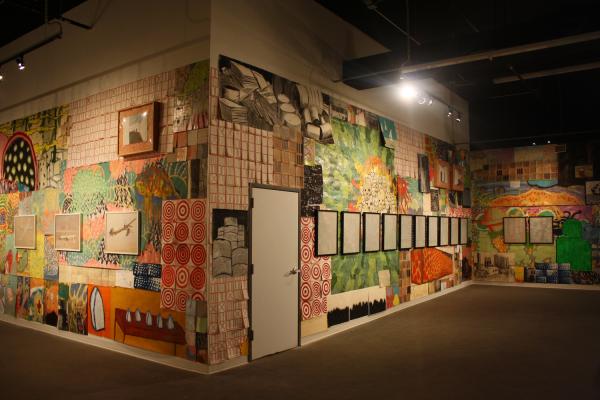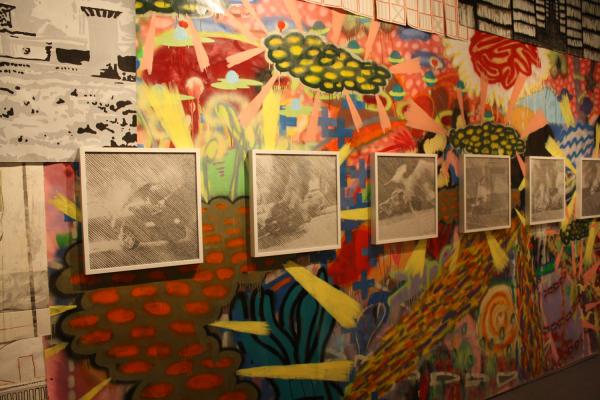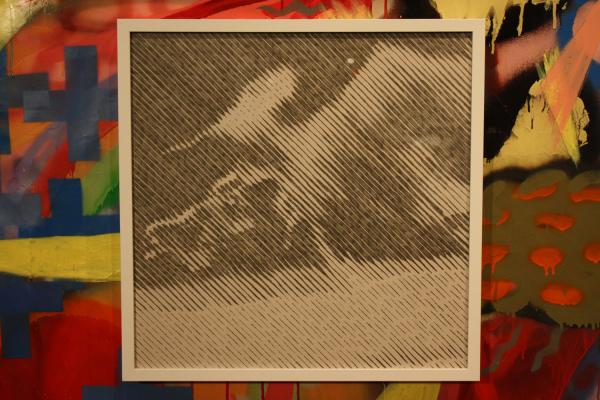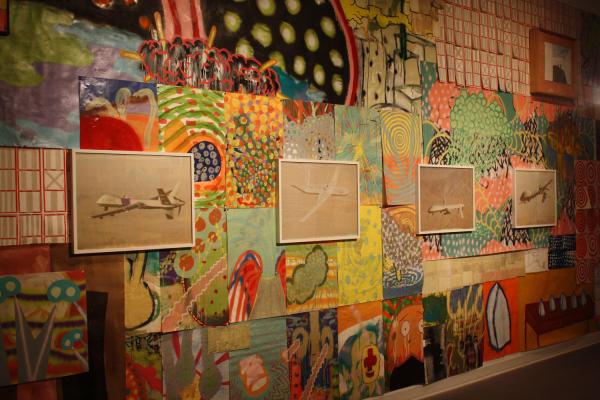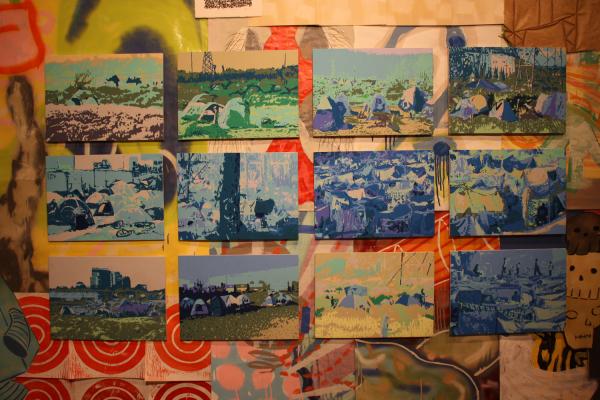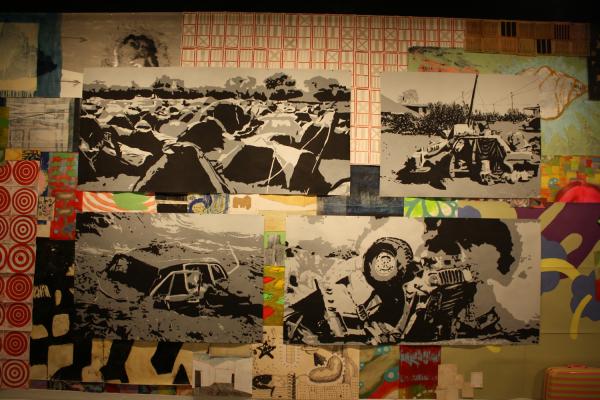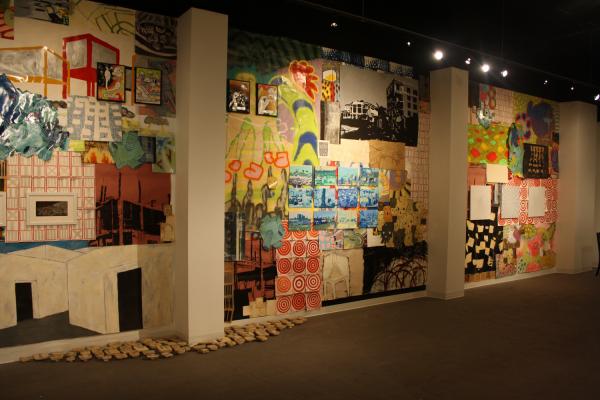Lou
Joseph
Search Engine
from the Search Engine Field Guide, produced for this exhibition:
For this exhibition, the ICA has discarded the traditional linear retrospective standard in favor of displaying the work topologically, with no particular system for working out each piece’s historical context. To help the curious viewer, we’ve listed characteristics of particular groups of work, although this is not completely comprehensive or always accurate. For information on specific work please see our gallery attendant.
Monotypes (1998-2000): Mostly single works, muted or earth-toned relief, intaglio and monoprints, generally abstract.
Repetition projects (2001-2004): Many of the works containing multiples (targets, marks, peg grids) fall within this group, along with work featuring overwriting, modular units, and other pieces featuring repetitive marks. The slide projection area shows numerous works from this period that no longer exist.
Accumulation projects (2004-2006): Much of this work has to do with depictions of piles, either in the form of photographic records of garbage, construction materials, etc., or as formal explorations of the idealization of accumulated materials. Some works (such as the ones on Charles and William Koch) address the excesses of specific accumulations of money and power.
Fort Grunt (2006-2008): A full-time collaboration with Ben Fisher in Durham, North Carolina, all work from this period is attributed to the joint name “Fort Grunt.” This work is identifiable by its bright colors, imagery of infestation, disease, conflict and death rendered in a cartoonish manner and composes the bulk of larger works in the show.
Middle States (2009-2012): The majority of this work consists of the framed and mounted pieces in the show, including the tent city paintings, drawings of cars on fire, superfund site woodcuts, cancer cell screen prints, and obsessive mark-making paintings in color and black and white. This work also includes all the large grey gradient paintings of disabled automobiles, prisons, landfills, and damaged buildings.
The slide projector will be showing a rotation of works no longer owned by the artist, and work in this exhibition shown in its original context. This work is mostly from before 2004 (when the artist finally acquired his own digital camera), but also includes various earlier works including childhood drawings and perhaps an angsty painting or two from high school.
The rear area of the museum features a photo grid, made up of images from the same pre-digital camera-owning period, mostly consisting of studies and research pictures of elements perhaps recognizable in the main exhibition. There are also several of many mail art collaborations with various artists, print exchanges the artist has participated in, and a vitrine with every journal and sketchbook kept by the artist since age twenty-two.
